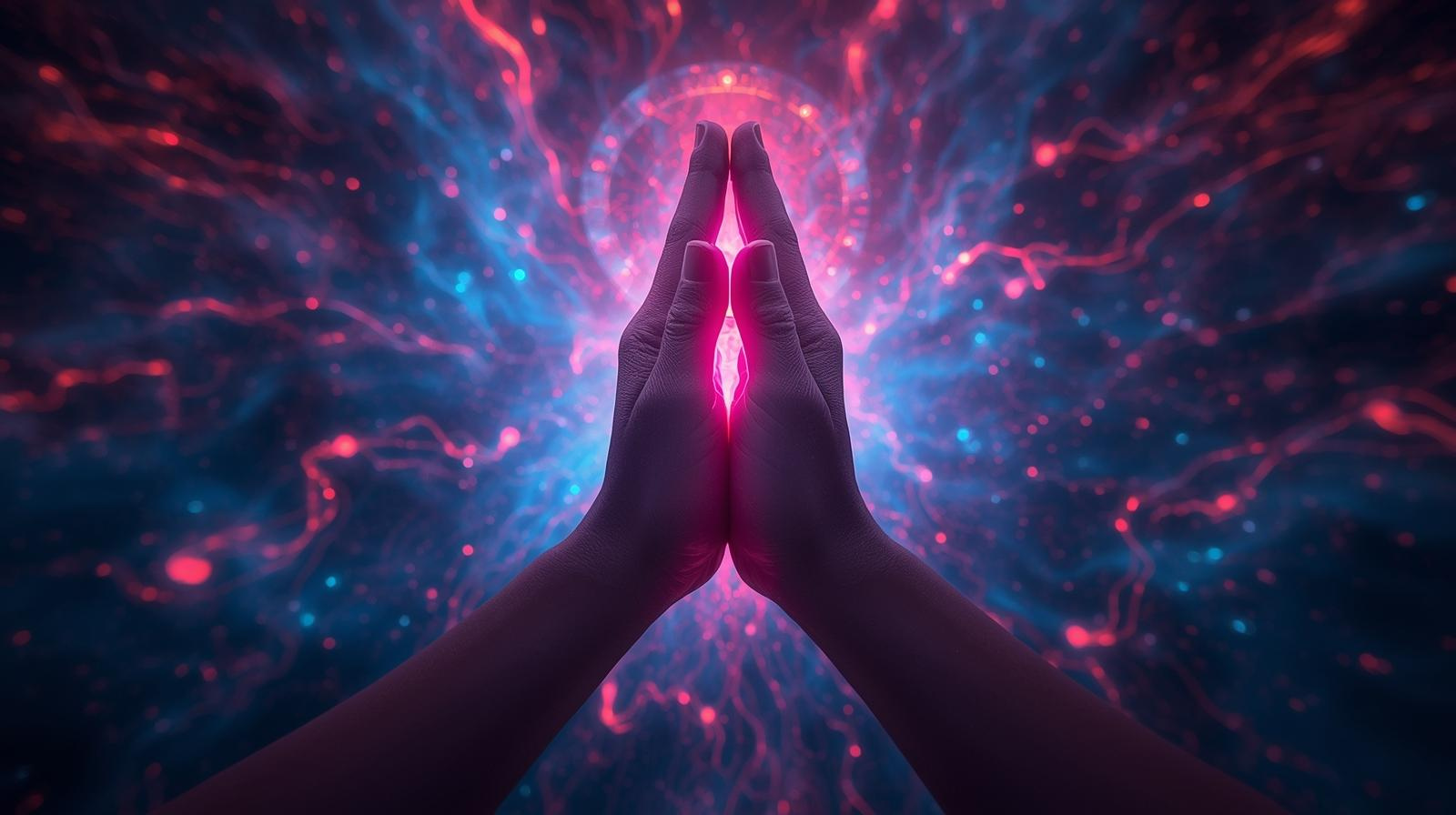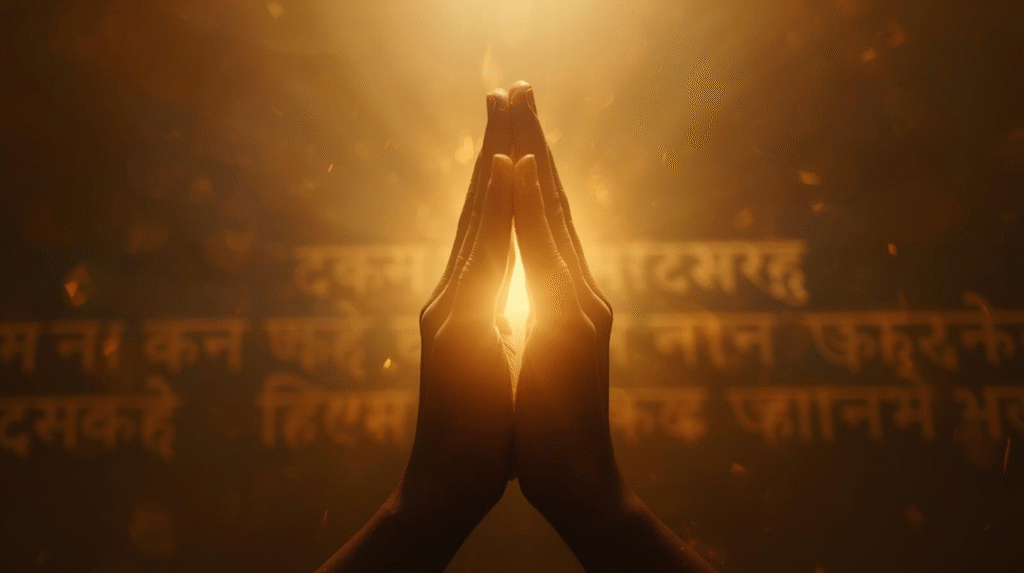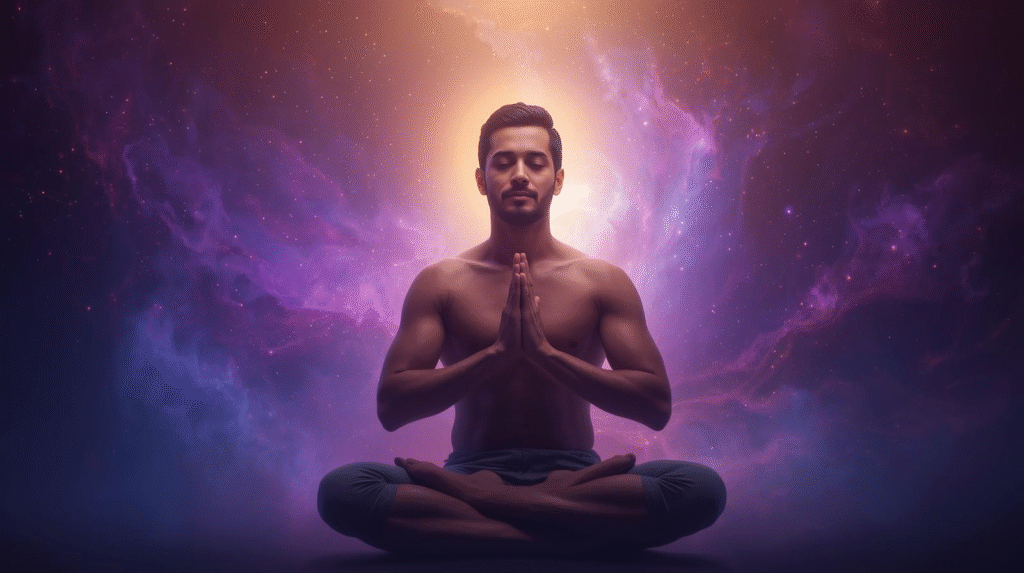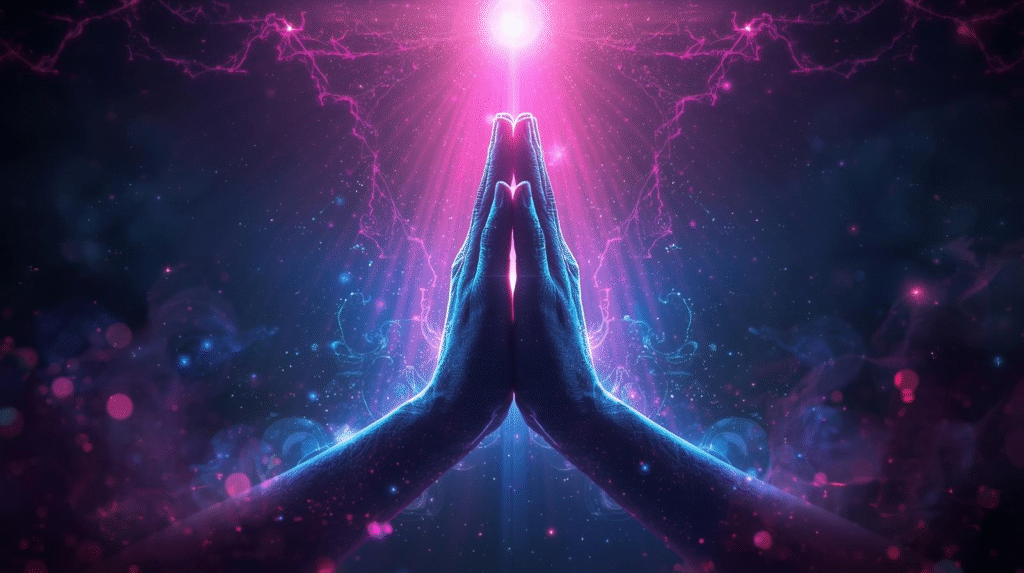
If you have attended a yoga class, you’ve likely heard the teacher end the session with Namaste. For beginners, it may sound like a cultural phrase or just a routine word. But have you ever wondered why do yoga classes end with Namaste?
In reality, the practice of ending yoga with Namaste is a powerful spiritual closure that brings meaning to the session. The meaning of Namaste in yoga goes beyond words—it is about respect, gratitude, and acknowledgment of the divine energy present in every individual.
This article explores the spiritual meaning of Namaste, its cultural roots, its role in yoga closing rituals, and whether it is religious or simply symbolic. We’ll also compare how Namaste is used in yoga versus Indian culture, answer common questions, and explain why teachers across the world still use Namaste in yoga classes today.
🌿 What Does Namaste Mean in Yoga?
The word Namaste comes from Sanskrit, an ancient Indian language. It is a combination of two words:
- Nama = to bow
- Te = to you
Thus, Namaste literally means “I bow to you.”
In Indian culture, it is a respectful greeting. But in yoga, the Namaste gesture meaning goes deeper—it recognizes that there is a divine spark within each of us, and by saying Namaste, we honor that spark in others.
When we hear Namaste in yoga classes, it is not just the end of practice, but a reminder of unity, humility, and respect.

🙏 Why Do Yoga Classes End with Namaste?
Ending a yoga class with Namaste yoga tradition is not a random practice—it is deeply intentional.
First, it serves as an expression of gratitude. Students thank the teacher for guidance, and teachers thank students for their energy and dedication. Second, it provides a sense of spiritual closure. Just like meditation begins with a calm entry and ends with awareness, yoga ends with Namaste to signal the return to daily life.
Most importantly, saying Namaste in yoga closing rituals builds a bond of connection. In that moment, teachers and students recognize each other as equals, beyond titles or roles.
🌸 The Gesture of Namaste in Yoga Classes
The practice is not just about saying a word—it includes a physical gesture, often called Anjali Mudra.
- Hands pressed together at the heart center – Represents unity and balance.
- Fingers pointing upward – Symbolizes connection to higher energy.
- Bowing the head slightly – A sign of humility and respect.
This Namaste gesture in yoga brings physical, mental, and spiritual alignment. When done collectively, it creates harmony in the entire class.
📖 The Historical and Cultural Roots of Namaste
To understand the origin of Namaste in yoga culture, we need to look at Indian traditions. In India, Namaste is used daily as a greeting, a respectful acknowledgment, and even during prayers. It has always symbolized respect for others and for the divine.
In yoga, teachers adopted this cultural practice as a spiritual practice, giving it a special place at the end of classes. Over time, Namaste in yoga classes became a global phenomenon, traveling across cultures while keeping its core meaning intact.
🧘 Comparison Table: Namaste in Yoga vs Namaste in Indian Culture
| Aspect | Namaste in Yoga | Namaste in Indian Culture |
|---|---|---|
| Meaning | Spiritual closure, gratitude, unity | Greeting, respect, acknowledgment |
| Gesture | Hands at heart, bow after practice | Hands together, bow anytime |
| Purpose | To close yoga practice with mindfulness | To greet respectfully in daily life |
| Context | End of yoga classes worldwide | Daily conversations, rituals, prayers |
This table shows that while Namaste in yoga classes has gained spiritual closure significance, its roots in Indian culture are still visible.

🌍 Is Namaste Religious in Yoga Practice?
A common question is: “Is Namaste religious in yoga practice?”
The answer is no. Even though the word comes from Indian culture, within yoga it is used in a spiritual but non-religious way. Saying Namaste is not about following a religion—it is about expressing gratitude and respect.
Many people in the West feel unsure about using cultural words. But in yoga, Namaste etiquette is simply about acknowledgment of shared energy. It does not bind anyone to a specific faith.
🌟 The Benefits of Ending Yoga with Namaste
Ending a yoga session with Namaste spiritual practice may look like a small gesture, but it carries powerful effects:
- It allows the mind and body to transition gently from practice to normal life.
- It fosters a sense of community between students and teacher.
- It strengthens mindfulness and gratitude.
- It reminds us that yoga is not only about poses but also about connection.
Even a single word can transform the end of a class into a moment of peace.
💡 Should You Say Namaste After Yoga?
Another common question is: “Should you say Namaste after yoga?”
The answer: it’s optional. Some yoga traditions close with mantras, silence, or chants. Others always include Namaste.
If you feel comfortable, joining in when the teacher says Namaste in yoga classes enhances the feeling of unity. But even if you choose not to say it, you can still experience the benefits of the practice.
🌟 The Symbolism of Teacher and Student Connection
The moment when the teacher says Namaste yoga closing ritual and the students repeat it is symbolic. It reflects:
- Equality – No one is higher or lower, both teacher and student honor each other.
- Humility – Recognizing that wisdom flows both ways.
- Respect – Appreciating the journey and energy of the practice.
Through Namaste, yoga teachers remind students that learning is not one-sided, and the energy created in the class is shared.
📌 Key Takeaways (Short List)
- Namaste meaning in yoga = “I bow to you” → symbol of respect and unity.
- Yoga teacher Namaste practice = gratitude, spiritual closure, community.
Everything else in yoga may vary across styles, but this one ritual is almost universal.

Conclusion
Ending yoga practice with Namaste in yoga classes is more than a habit—it is a reminder that yoga is about humility, gratitude, and connection. The word carries thousands of years of tradition and yet feels fresh every time it is spoken.
So the next time you’re in a yoga class, when your teacher bows their head and says Namaste, take a breath, press your palms together, and remember: the divine in me honors the divine in you.
What does Namaste mean in Sanskrit?
In Sanskrit, Namaste is formed from two words: “Nama” meaning “bow” and “Te” meaning “to you.” Together, it means “I bow to you.”
Is Namaste religious in yoga practice?
No, Namaste in yoga classes is not tied to any religion. It is a cultural and spiritual practice that represents respect and unity, not worship.
Do all yoga classes end with Namaste?
Not always. While most teachers use the Namaste yoga tradition, some may close with silence, mantras, or guided meditation instead.
Can beginners skip saying Namaste in yoga class?
Yes. Saying Namaste in yoga etiquette is optional, but joining in can help create a sense of connection with the group.
Why do teachers say Namaste after yoga?
A yoga teacher’s Namaste at the end of class shows appreciation for the students, respect for the yoga tradition, and a reminder of the shared energy created in the session.
Is Namaste only used in yoga?
No, Namaste is also used in Indian culture as a daily greeting. In yoga, however, the Namaste gesture meaning carries a spiritual significance and is reserved for closing practice.
Should I reply Namaste if the teacher says it?
Yes, usually students respond with Namaste to honor the teacher and the shared practice. It is a respectful way to close the session.





